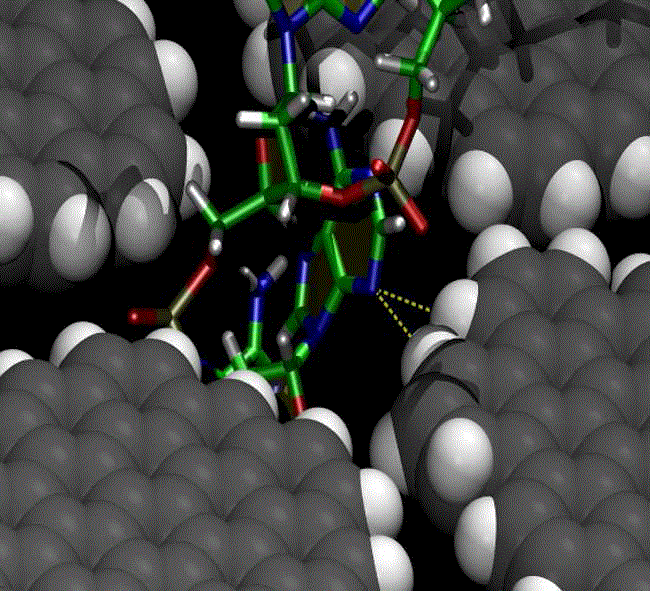 Nanopore-based DNA sequencing offers a huge advantage on conventional genomic sequencing methods: a single molecule of DNA could potentially be sequenced without the need for a PCR amplification step. Nanopore-based sequencing works by passing a DNA molecule through a nanopore and measuring the change in the current through the nanopore. Each nucleotide interacts with the nanopore to a varying degree, resulting in a characteristic electronic signal for each of the 4 nucleotides. However, nanopore-based DNA sequencing is currently struggling with a series of challenges, such as poor signal-to-noise ratios and, in particular, the need for single-base resolution during the movement of the DNA molecule through the nanopore. This means that only one nucleotide should interact with the nanopore at any one time and calls for exceedingly thin nanoelectrodes embedded with nanopores. Graphene is a one-atom-thick layer of carbon film and, as such, represents the thinnest of the thin for nanoelectrodes.
Nanopore-based DNA sequencing offers a huge advantage on conventional genomic sequencing methods: a single molecule of DNA could potentially be sequenced without the need for a PCR amplification step. Nanopore-based sequencing works by passing a DNA molecule through a nanopore and measuring the change in the current through the nanopore. Each nucleotide interacts with the nanopore to a varying degree, resulting in a characteristic electronic signal for each of the 4 nucleotides. However, nanopore-based DNA sequencing is currently struggling with a series of challenges, such as poor signal-to-noise ratios and, in particular, the need for single-base resolution during the movement of the DNA molecule through the nanopore. This means that only one nucleotide should interact with the nanopore at any one time and calls for exceedingly thin nanoelectrodes embedded with nanopores. Graphene is a one-atom-thick layer of carbon film and, as such, represents the thinnest of the thin for nanoelectrodes.
One drawback of graphene electrodes is their reduced conductance in comparison to, for example, gold electrodes. Another is that the coupling between graphene electrodes and DNA is smaller than that between gold and DNA due to the smaller space extension of carbon outer orbitals compared to those of gold. Faced with these problems, Liu, Scheicher, and co-workers propose the hydrogenation of the edges of graphene electodes (the introduction of H atoms). The edge hydrogenation has several advantages: i) H-bond-like interactions between graphene electrodes and the translocating base-pairs enhances the coupling between them, and increases the magnitude of transverse tunnelling currents. ii) The interactions due to the H-bonds forces the nucleotides to adopt certain more favored conformations as they pass through the pore. This reduction in the number of possible conformations results in a narrowing of the distribution of resulting conductance values, enhancing the characteristic electronic signal for each nucleotide. iii) The H-bonds cause an attractive force, slowing down the passage of the DNA through the nanopore, and leading to increased resolution of individual nucleotides.
Using molecular dynamics simulations, the team showed that a 3-fold increase in the magnitude of transverse tunnelling conductance could be achieved, along with a concurrent decrease in variation in conductance. This increase in conductance facilitates the reading of the nucleotide sequence at a much greater speed than previously possible, and suggests that edge-hydrogenation of carbon electrodes could further the quest for solid-state, single-molecule DNA sequencing.

















